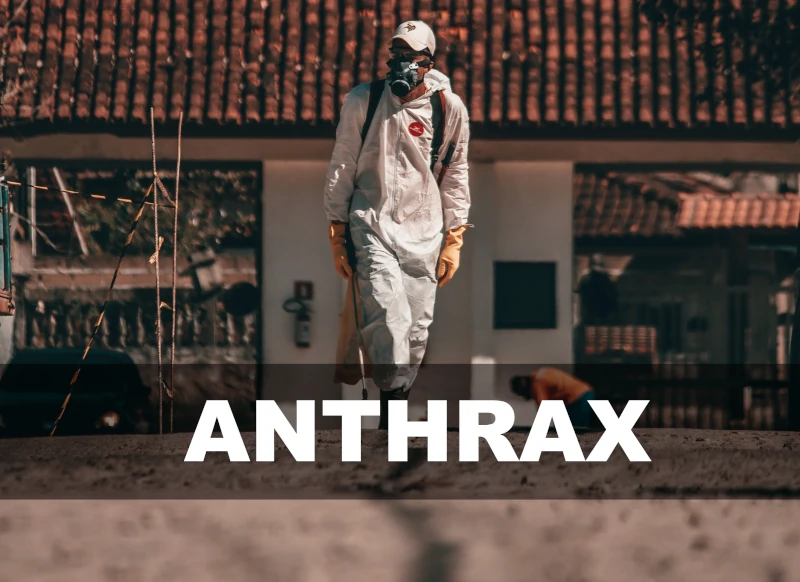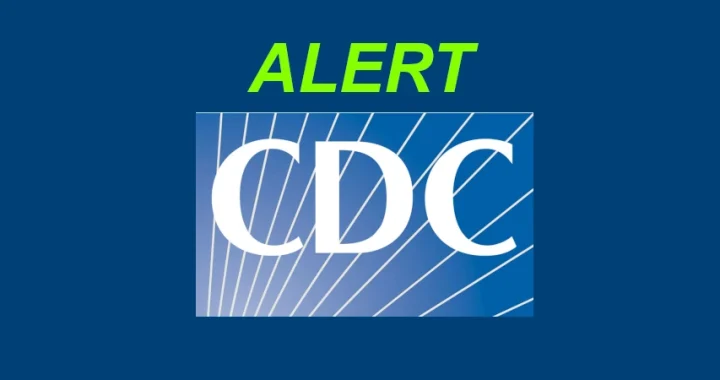The 2001 Anthrax Attacks: An Unsolved Bioterror Mystery

In the wake of the devastating 9/11 attacks in 2001, the United States faced an unprecedented wave of fear and uncertainty. Amidst the chaos of 9/11, another threat emerged that further intensified the nation’s anxiety – the 2001 Anthrax Attacks.
This series of bioterror incidents marked a dark chapter in American history, as an unseen enemy exploited the vulnerability of a shaken nation. The FBI never find out who was behind the attacks.
Overview
The first indication of the Anthrax Attacks came in early October 2001 when letters containing a highly refined form of anthrax were sent to media outlets and prominent political figures. The sinister powder unleashed a wave of panic, as people grappled with the realization that terrorism had taken an even more insidious form. The perpetrators, motives, and methods behind the attacks would remain shrouded in mystery for years to come.
The first victim of the Anthrax Attacks was Robert Stevens, a photo editor at the Sun tabloid newspaper in Florida. Stevens’ exposure to the deadly anthrax spores resulted in his death on October 5, 2001, becoming the first casualty of this bio-terrorism onslaught. The subsequent days saw more letters containing anthrax mailed to key figures, including Senators Tom Daschle and Patrick Leahy, leading to widespread fear and disruption.
The methodical nature of the attacks raised immediate concerns about the sophistication of the assailant. The anthrax spores were finely milled and possessed a potency that suggested a high level of expertise in microbiology. As investigators delved into the origins of the anthrax, attention turned to Fort Detrick, a U.S. Army research facility with a history of anthrax research.
The Investigation
The investigation took a significant turn when it was revealed that the anthrax strain used in the attacks, known as the Ames strain, was identical to the strain maintained at Fort Detrick. This revelation intensified suspicions and brought the focus onto individuals with access to the facility’s anthrax stores. Dr. Steven Hatfill, a former researcher at Fort Detrick, quickly became a person of interest in the investigation, though he maintained his innocence throughout.
As the investigation widened, the FBI and other agencies faced numerous challenges. The sheer complexity of tracking the source of the anthrax spores, coupled with the lack of a clear motive, made progress slow and arduous. The nation watched anxiously as the FBI pursued leads, sometimes hitting dead ends, in their quest to unmask the perpetrators.
The Anthrax Attacks not only claimed lives but also left lasting psychological scars on the American psyche. The fear of biological warfare became a palpable reality, prompting widespread panic and a surge in demand for antibiotics and vaccines. Post offices and mailrooms implemented stringent safety measures, and the country grappled with a sense of vulnerability that lingered long after the attacks ceased.
FBI Failed Investigation
In 2008, the FBI officially closed its investigation, naming Dr. Bruce Ivins, another scientist from Fort Detrick, as the prime suspect behind the Anthrax Attacks. However, Ivins had died by suicide in 2008, and the evidence against him was circumstantial, leaving lingering doubts about the investigation’s conclusion. Some critics argued that the FBI had failed to conclusively prove Ivins’ guilt and that the true perpetrators might still be at large.
In 2006 the FBI created the entire genome and was able to track the spores used in the attacks to an actual flask of Anthrax that was produced in a biolab. The flask was sourced and used by several laboratory workers and scientists.
The Anthrax Attacks of 2001 remain a chilling reminder of the complex challenges posed by bio-terrorism. The uncertainty surrounding the motives and identity of the attackers underscores the difficulty of investigating such covert and sophisticated acts. As the nation reflects on this dark period, questions linger about the true perpetrators and the enduring impact of these bioterror incidents on American society and security.
Prevention of Anthrax Exposure
Achieving absolute prevention of anthrax exposure is challenging for several reasons, primarily due to the nature of the bacterium Bacillus anthracis, the various potential sources of exposure, and logistical and practical constraints. Here are some key factors contributing to the difficulty of achieving absolute prevention:
- Ubiquity of Bacillus anthracis: Bacillus anthracis, the bacterium that causes anthrax, exists naturally in the environment, particularly in soil. The spores can survive for long periods, making it challenging to eliminate the bacterium entirely from the environment. This natural presence makes it difficult to achieve absolute prevention, especially in regions where anthrax is endemic among wildlife or livestock.
- Multiple Modes of Transmission: Anthrax can be transmitted through different routes, including inhalation, ingestion, and skin contact. The diversity of transmission modes complicates preventive efforts, as various precautions and protective measures are needed to address different exposure pathways.
- Potential for Bioterrorism: While naturally occurring anthrax cases are relatively rare, the potential for intentional release of anthrax spores as a bioterrorism agent adds an additional layer of complexity. Such incidents may be unpredictable and can occur in various settings, making it challenging to implement comprehensive preventive measures.
- Inherent Challenges in Detection: Anthrax spores are microscopic and can be challenging to detect, especially in scenarios where intentional release is involved. This difficulty in early detection can limit the effectiveness of preventive measures, as timely intervention is crucial in minimizing the impact of anthrax exposure.
- Varying Risk Levels: The risk of anthrax exposure varies across different regions, occupations, and activities. Individuals working in certain professions, such as laboratory researchers or livestock handlers, may face higher risks, making it challenging to implement uniform preventive measures that address all situations.
- Logistical and Resource Constraints: Implementing and maintaining comprehensive preventive measures, including vaccination programs and monitoring environmental sources, require significant resources and coordination. In some regions or situations, logistical challenges may hinder the ability to achieve and sustain high levels of preventive measures.
- Public Awareness and Compliance: Achieving absolute prevention also relies on the awareness and compliance of the general public and individuals in high-risk occupations. Ensuring widespread understanding of preventive measures and encouraging consistent compliance can be challenging.
- Unpredictability of Bioterrorism Events: In the context of intentional release, the unpredictability and secrecy associated with potential bioterrorism events make it challenging to establish foolproof preventive measures. Rapid response and coordination become critical in such situations.
Personal Protection
Protecting oneself from anthrax involves a combination of awareness, preparedness, and adherence to recommended guidelines. While the likelihood of encountering anthrax in everyday life is minimal, if used as biological weapon avoidance could be more difficult.

Here are a couple key strategies to help protect against an anthrax attack.
- Stay Informed: Stay updated on anthrax-related news and advisories from reliable sources such as public health agencies and government organizations. Understanding the current risk level and any specific precautions recommended for your region is essential. Having a scanner radio or some means of listening for news will be greatly helpful in the event of a grid-down, biol terror event.
- Personal Protective Equipment (PPE): Individuals working in environments where anthrax exposure is a potential risk should use appropriate personal protective equipment. This may include gas masks, gloves, and, in certain situations, full-body HAZMAT suits. The type of PPE required depends on the nature of the work and the likelihood of exposure.
- Practice Good Hygiene: Regular handwashing is a simple yet effective measure to reduce the risk of anthrax exposure. Thoroughly washing hands with soap and water helps eliminate any potential spores that may have been encountered.
- Be Cautious with Mail and Packages: Given the history of anthrax being sent through the mail, exercise caution when handling suspicious packages or envelopes. If a package appears unusual, has unexpected powders, or lacks a return address, avoid touching it and report it to the appropriate authorities.
- Emergency Preparedness: Familiarize yourself with emergency response protocols in the event of an anthrax incident. This includes knowing evacuation routes, having access to emergency supplies, and understanding local community response plans.
- Seek Medical Attention: In the event of suspected anthrax exposure, seek immediate medical attention. Early diagnosis and treatment with appropriate antibiotics can be highly effective in preventing the development of severe illness.
- Antibiotics: Weight based dosing of Cipro (ciprofloxacin) of 500 mg/5dl concentration can be used to fight off the Anthrax spore virus, but results are not guaranteed. The shelf life of Cipro is estimated to be between 10 and 13 years. Ciprofloxacin is a broad-spectrum antibiotic which means it can be used for a broad range of infections to include Anthrax, pneumonia and skin and bone infections.
Conclusion
The 2001 Anthrax attacks are a reminder that biological weapons have been used and will most likely be used again. Preppers can be prepared by stock piling antibiotics and learning to avoid populated areas that are most likely to get sick.
Having a solid means of obtaining news in case of a grid-down, bioterror attack, such as a scanner or GMRS radio with UHF Rx capabilities, will allow you to stay away from the infected areas.






